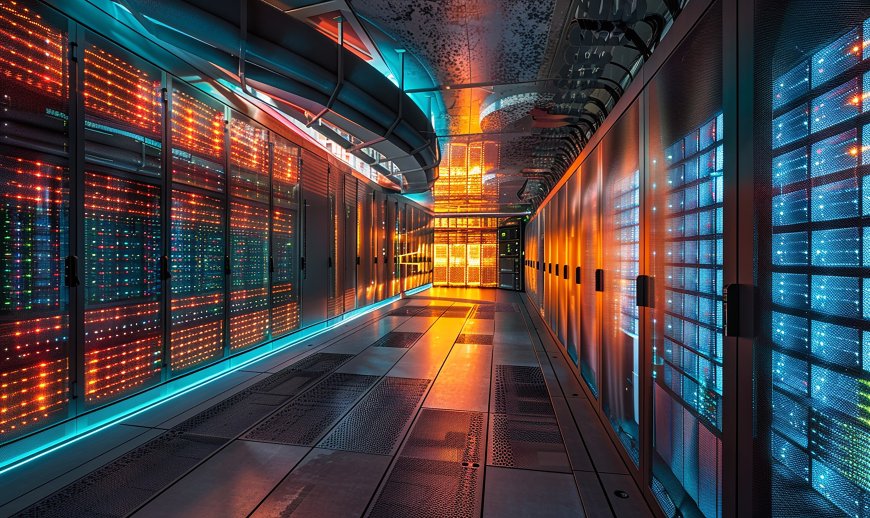Cloud-Native Data Centers: Bridging Infrastructure and Innovation
Explore how cloud-native data centers are transforming infrastructure with AI, sustainability, and hybrid strategies in 2025.

Data centers based on cloud-native technology will lead technological progress in 2025 through their integration of advanced infrastructure with innovative solutions. The facilities acts as active networks which lead artificial intelligence development and sustainable practices while providing flexible computing solutions.
The Surge in AI-Driven Infrastructure
AI technology demands have prompted tech giants to allocate substantial financial resources into data center infrastructure development. Major technology companies Meta and Microsoft together with Alphabet now invest significant funds to make their AI systems more powerful. The funds dedicated to capital expenditure at Meta now amount to $68 billion because the company invests in data center hardware to allow its AI operations.
The industry growth extends beyond the borders of America. The combination of chip manufacturing firms and infrastructure service providers such as Yotta with NVIDIA and Reliance Jio Infocomm with Tata Group in India develops sustainable data centers with improved energy efficiency.
Embracing Hybrid and Multi-Cloud Strategies
The use of hybrid and multi-cloud platforms by organizations continues to increase because these solutions gives better flexibility combined with decreased vendor loyalty risks. The 2024 Gartner research indicates that 90% of businesses will deploy these strategies before 2025 arrives.
Hybrid cloud systems integrate public and private clouds to guarantee onsite sensitive data storage together with public cloud scalability benefits. Workloads run more efficiently across multiple cloud providers under multi-cloud systems to improve availability and speed up execution.
Sustainability: A Core Imperative
Cloud-native data centers are focusing their efforts on sustainability through two main objectives which include reducing energy usage and implementing renewable power sources. Major cloud providers actively drive this trend as Google tackles carbon-free energy by 2030 and Microsoft targets the same carbon-negative goal and AWS seeks to reach 100% renewable energy by 2025. A critical agreement known as the Climate Neutral Data Centre Pact which receives support from the European Commission delivers specific benchmarks regarding energy efficiency and carbon-free operations and water savings and material recycling that target climate-neutral operations by 2030.
Innovations in Cooling Technologies.
Handling powerful and compact servers in data centers requires effective cooling practices to be prioritized. Liquid cooling technology assumes dominance over traditional air cooling systems by providing improved energy efficiency alongside better thermal management.
Future high-scale data centers with built-for-purpose AI facilities in India will use advanced liquid immersion cooling methods to generate major energy efficiency and cost savings.
The Role of Automation and AI
Automation is streamlining cloud infrastructure management. Companies like Cast AI are developing platforms that automatically manage cloud resources, helping businesses lower computing costs and boost performance. Their services, particularly Kubernetes automation, have seen increased demand as organizations adopt AI tools.
Moreover, AI-native energy orchestration is enhancing the role of data centers in energy systems, optimizing the allocation of energy resources across multiple stakeholders.
Conclusion
Modern technological landscapes receive transformation through cloud-native data centers which unite superior infrastructure elements with modern solutions. Substantial investments into AI combined with hybrid and multi-cloud adoption and ecological responsibility and improved cooling technologies make these facilities connect infrastructure needs to innovative breakthroughs.
The evolution of cloud-native data centers throughout the future will act as a foundation for creating both sustainable technologies and an advanced technical foundation.


































































![https //g.co/recover for help [1-866-719-1006]](https://newsquo.com/uploads/images/202506/image_430x256_684949454da3e.jpg)

























![[PATREON EXCLUSIVE] The Power of No: How to Say It, Mean It, and Lead with It](https://tpgblog.com/wp-content/uploads/2025/06/just-say-no.jpg?#)



















































